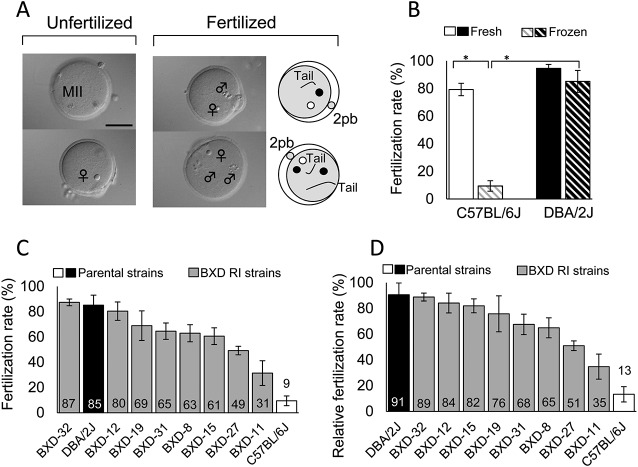Fig. 1.
Fertilization rates of fresh and frozen-thawed spermatozoa from RI, B6J, and D2J mouse strains. (A) Oocytes at 5 h post-insemination subjected to aceto-orcein staining. Fertilized oocytes can contain one or more spermatozoa within the ooplasm. 2pb, the second polar body; bar = 50 μm. (B) Fertilization rates using fresh or frozen-thawed spermatozoa from B6J and D2J mouse strains (means ± SEMs; * P < 0.01 by Tukey-Kramer test). See Table 1 for the result of two-way ANOVA. (C) Strain distribution of the fertilization rates using frozen-thawed spermatozoa from the RI, B6J, and D2J mouse strains (means ± SEMs). (D) Strain distribution of the relative fertilization rates using frozen-thawed spermatozoa from RI, B6J, and D2J strains of mice (means ± SEMs). The values were calculated by the fertilization rate of frozen-thawed spermatozoa divided with that of fresh spermatozoa in each individual male; Relative fertilization rate (%) = (Fertilization rate with frozen spermatozoa (%)/Fertilization rate with fresh spermatozoa (%)) × 100 (n = 6 for each strain).

